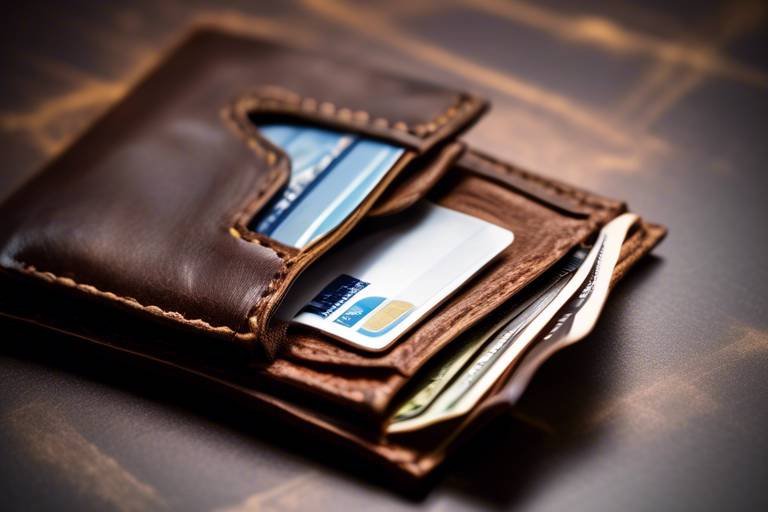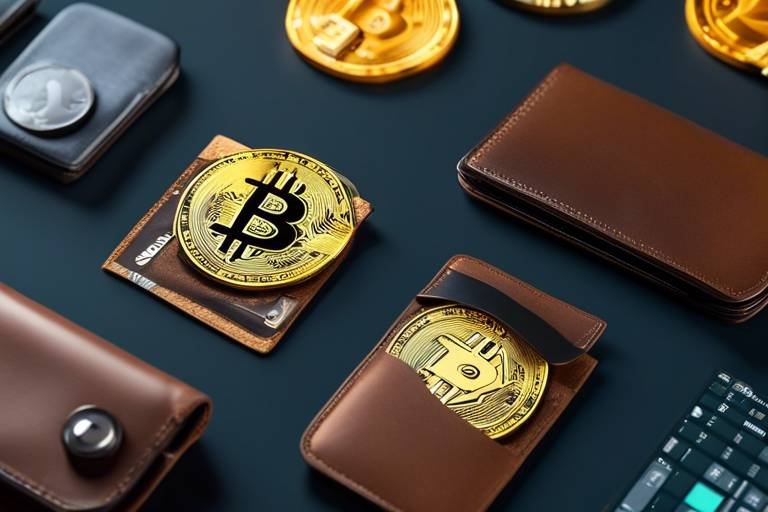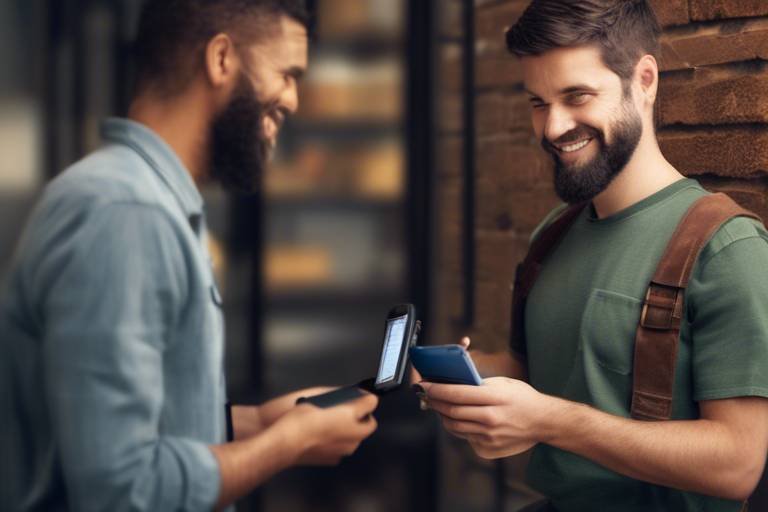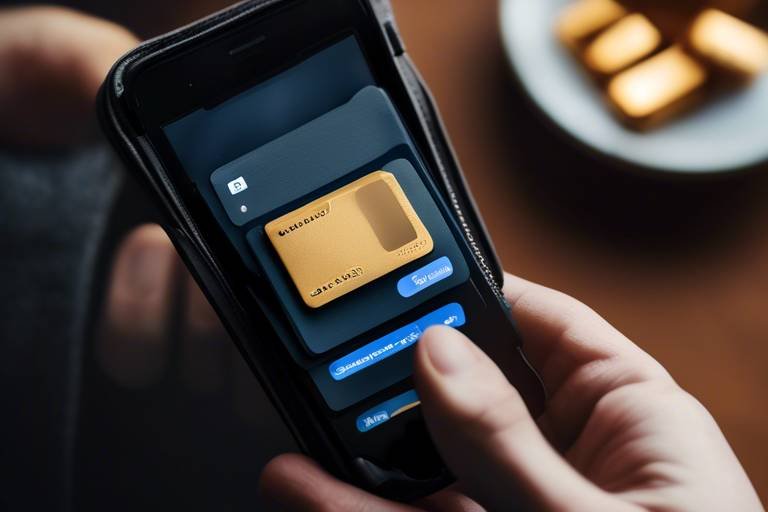How to Conduct a Security Audit on Your Wallet
In today’s digital age, the importance of securing your digital assets cannot be overstated. Just like you wouldn’t leave your physical wallet lying around in a crowded place, your digital wallet also needs protection from various threats. A security audit is a systematic way to evaluate the security measures surrounding your wallet and identify potential vulnerabilities. This guide will walk you through the essential practices, tools, and strategies to ensure that your digital assets remain safe and sound.
Before diving into the nitty-gritty of conducting a security audit, it’s crucial to understand what wallet security entails. Digital wallets come in various forms, each with its own set of security features. For instance, hardware wallets, which store your private keys offline, are often considered more secure than software wallets that operate online. Knowing the type of wallet you use can help you grasp its inherent security features and limitations, allowing you to tailor your security measures accordingly. Remember, the first step to securing your assets is understanding the tools you are using!
Recognizing potential threats is the cornerstone of a successful security audit. Your wallet can be exposed to a myriad of vulnerabilities, and knowing what these are can help you fortify your defenses. Common threats include phishing attacks, malware, and social engineering tactics, all of which can compromise your wallet’s security. By being aware of these risks, you can take proactive measures to safeguard your digital assets.
Let’s delve deeper into the various types of attacks that could target your wallet. Understanding them can be your best defense.
Phishing attacks are designed to trick you into revealing sensitive information, such as your wallet credentials. These attacks often come in the form of deceptive emails or websites that mimic legitimate services. To protect yourself, always verify the source before clicking on any links or entering personal information. Look for telltale signs of phishing, such as poor grammar or suspicious URLs. Remember, if something seems off, it probably is!
Malware is another significant threat that can infiltrate your devices and compromise wallet security. This malicious software can steal your private keys or even take control of your wallet. To mitigate these risks, ensure that your devices are equipped with reliable antivirus software and regularly scan for threats. Additionally, avoid downloading apps or software from untrusted sources, as these can often be breeding grounds for malware.
Social engineering tactics manipulate individuals into divulging confidential information. These tactics are often more psychological than technical, making them particularly insidious. To safeguard against social engineering, always be cautious about the information you share online, especially on social media platforms. Consider implementing two-factor authentication (2FA) to add an extra layer of security to your wallet. This way, even if someone tricks you into revealing your password, they would still need a second form of verification to access your wallet.
Now that you’re aware of potential threats, it’s time to conduct the audit itself. This process involves a systematic review of your wallet's security measures and identifying areas for improvement. Start by assessing your current security settings and identifying any weaknesses. Regular audits can help you stay one step ahead of potential attackers.
Regularly reviewing your wallet's security settings is essential for maintaining robust protection. Check for features such as two-factor authentication, biometric locks, and recovery phrases. These settings can significantly enhance your wallet's security. If your wallet doesn’t offer these features, it might be time to consider switching to a more secure option.
To effectively conduct a security audit, you need to test your wallet for vulnerabilities. Utilize tools designed for vulnerability testing to identify weaknesses in your wallet’s security. Once you've identified any issues, take immediate action to address them. Remember, a proactive approach is always better than a reactive one!
Adopting best practices is vital for maintaining wallet security. Here are some key strategies to enhance your wallet's defenses:
Keeping your wallet software updated is crucial for security. Updates often include patches for newly discovered vulnerabilities, so make it a habit to check for updates regularly. Ignoring updates can leave your wallet exposed to threats that have already been addressed by the software developers.
Implementing effective backup strategies ensures that you can recover your wallet in case of loss or theft. Regularly back up your wallet data and store it in a secure location. Consider using encrypted external drives or secure cloud storage solutions for added protection. Remember, a backup is your safety net!
Q: What is the most secure type of wallet?
A: Hardware wallets are generally considered the most secure option for storing digital assets, as they keep your private keys offline.
Q: How often should I conduct a security audit?
A: It’s advisable to conduct a security audit at least once every few months or whenever you notice any suspicious activity.
Q: What should I do if I suspect a phishing attack?
A: If you suspect a phishing attack, do not click on any links, report the email or message, and consider changing your passwords immediately.
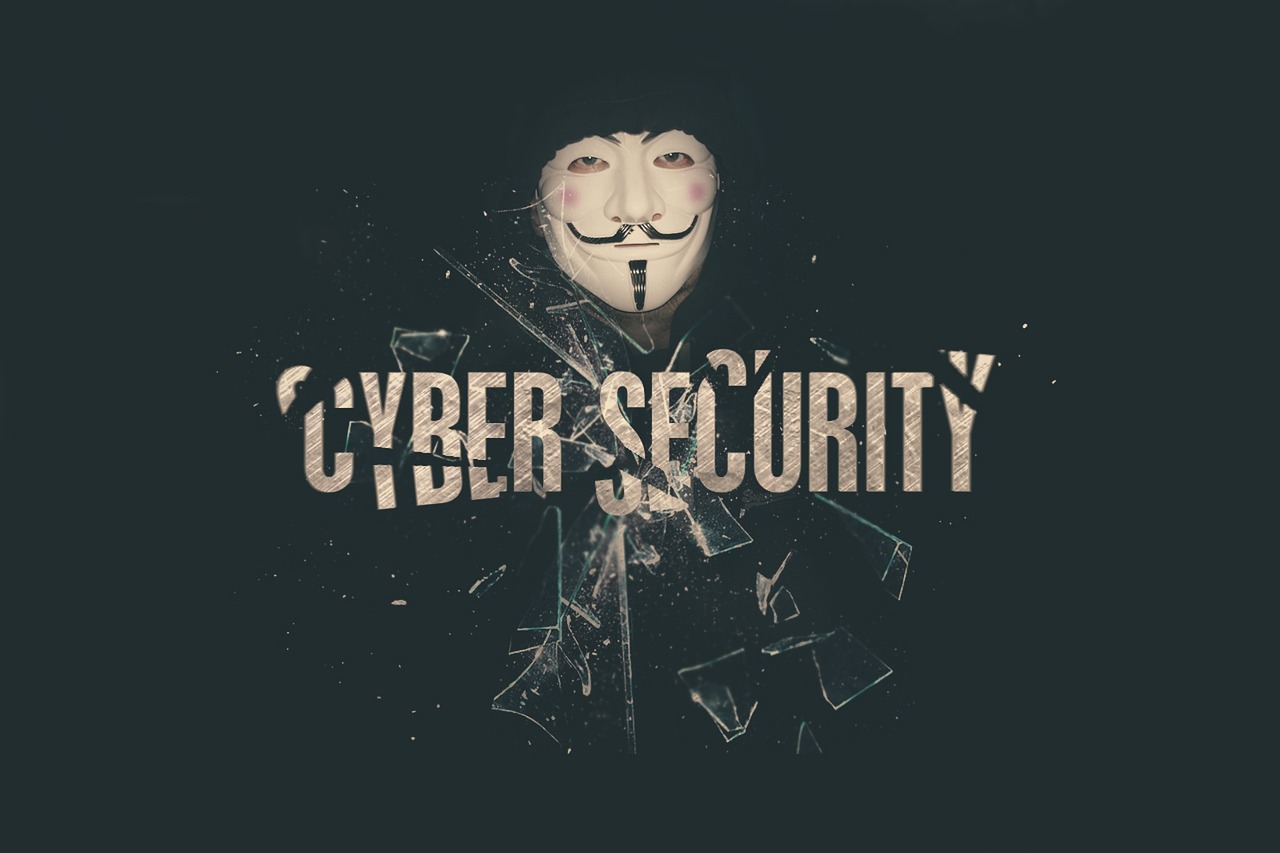
Understanding Wallet Security
When it comes to safeguarding your digital assets, understanding wallet security is your first line of defense. Digital wallets, much like their physical counterparts, come in various forms, each with its unique features and vulnerabilities. Whether you're using a hardware wallet, a software wallet, or even a paper wallet, knowing the ins and outs of each type can significantly enhance your security posture.
Hardware wallets are often regarded as the safest option. These devices store your private keys offline, making them less susceptible to hacking attempts. Think of them as a safe deposit box for your cryptocurrencies—secure, but still requiring you to be vigilant about who has access. On the flip side, software wallets are more convenient for everyday transactions but can be targets for cybercriminals. They are akin to carrying cash in your pocket; while it's easily accessible, it also makes you vulnerable to theft.
Paper wallets, although less common now, serve as a physical representation of your private keys. They are like a handwritten note tucked away in a drawer; if someone finds it, they can access your funds. Thus, understanding the inherent risks associated with each wallet type is crucial for effective security management.
To further grasp wallet security, let’s break down some essential security features you should look for:
- Encryption: Ensure that your wallet encrypts your private keys. This adds an extra layer of security, making it harder for unauthorized users to access your funds.
- Two-Factor Authentication (2FA): Always enable 2FA if available. This requires a second form of verification, such as a text message or authentication app, making it significantly harder for someone to compromise your wallet.
- Backup Options: A good wallet should offer backup options. In case of device failure or theft, you should be able to recover your assets easily.
Understanding these features is not just about knowing what they are; it's about actively choosing wallets that incorporate them. As you navigate the digital landscape, remember that securing your wallet is not a one-time task but an ongoing commitment. Regularly updating your wallet software, being wary of suspicious links or emails, and keeping your private keys secure are all part of a comprehensive security strategy.
In conclusion, the landscape of digital wallet security is ever-evolving, and staying informed is your best defense. By familiarizing yourself with the types of wallets and their security features, you’ll be better equipped to protect your valuable digital assets. Remember, knowledge is power, especially in the realm of cybersecurity!

Identifying Potential Threats
Recognizing potential threats to your wallet is the first step in conducting a security audit. In this digital age, where our assets are often stored in virtual wallets, understanding the landscape of threats is essential for safeguarding your investments. Just like a fortress needs to identify potential invaders, your wallet needs to be aware of the lurking dangers that could compromise its security. By being proactive and vigilant, you can prevent unwanted breaches and maintain control over your digital assets.
One of the most common vulnerabilities that users face comes from the various types of attacks that are designed to exploit weaknesses in wallet security. These attacks can take many forms, and being aware of them is crucial. For instance, consider phishing attacks, where malicious actors trick users into revealing sensitive information, such as private keys or passwords. This tactic often involves deceptive emails or websites that appear legitimate, leading unsuspecting users to compromise their own security.
Another significant threat comes from malware, which can infiltrate your devices and compromise wallet security. Malware can be disguised as harmless software or can be bundled with legitimate applications, making it difficult to detect. Once installed, it can capture keystrokes, access sensitive information, or even control your device remotely. Recognizing the signs of malware and implementing protective measures is vital to ensure your wallet remains secure.
In addition to these technical threats, there is also the risk of social engineering. This involves manipulating individuals into divulging confidential information, often through psychological tactics. Attackers may pose as trusted contacts or create a sense of urgency to trick you into revealing your wallet credentials. It's important to remain skeptical and verify any requests for sensitive information, no matter how legitimate they may seem.
To put this into perspective, think of your wallet as a bank vault. Just as you wouldn't let someone in without proper identification, you should never disclose your wallet information without verifying the request's authenticity. Consider the following common vulnerabilities:
- Phishing Attacks: Deceptive emails or websites designed to steal your information.
- Malware Risks: Software that can compromise your device and capture sensitive data.
- Social Engineering: Tactics that manipulate individuals into revealing confidential information.
By understanding these threats and their implications, you can take the necessary steps to fortify your wallet against potential breaches. It's not just about having a strong password; it's about creating a comprehensive security strategy that encompasses awareness, vigilance, and proactive measures. In the next section, we will delve deeper into the types of attacks and how they can affect your wallet, ensuring you are well-equipped to defend your digital assets.
Q: What is the most common threat to wallet security?
A: Phishing attacks are among the most common threats, where attackers trick users into revealing sensitive information.
Q: How can I protect my wallet from malware?
A: Regularly update your software, use reputable antivirus programs, and avoid downloading software from untrusted sources.
Q: What should I do if I suspect a phishing attempt?
A: Do not click on any links or provide any information. Verify the source through official channels before taking any action.
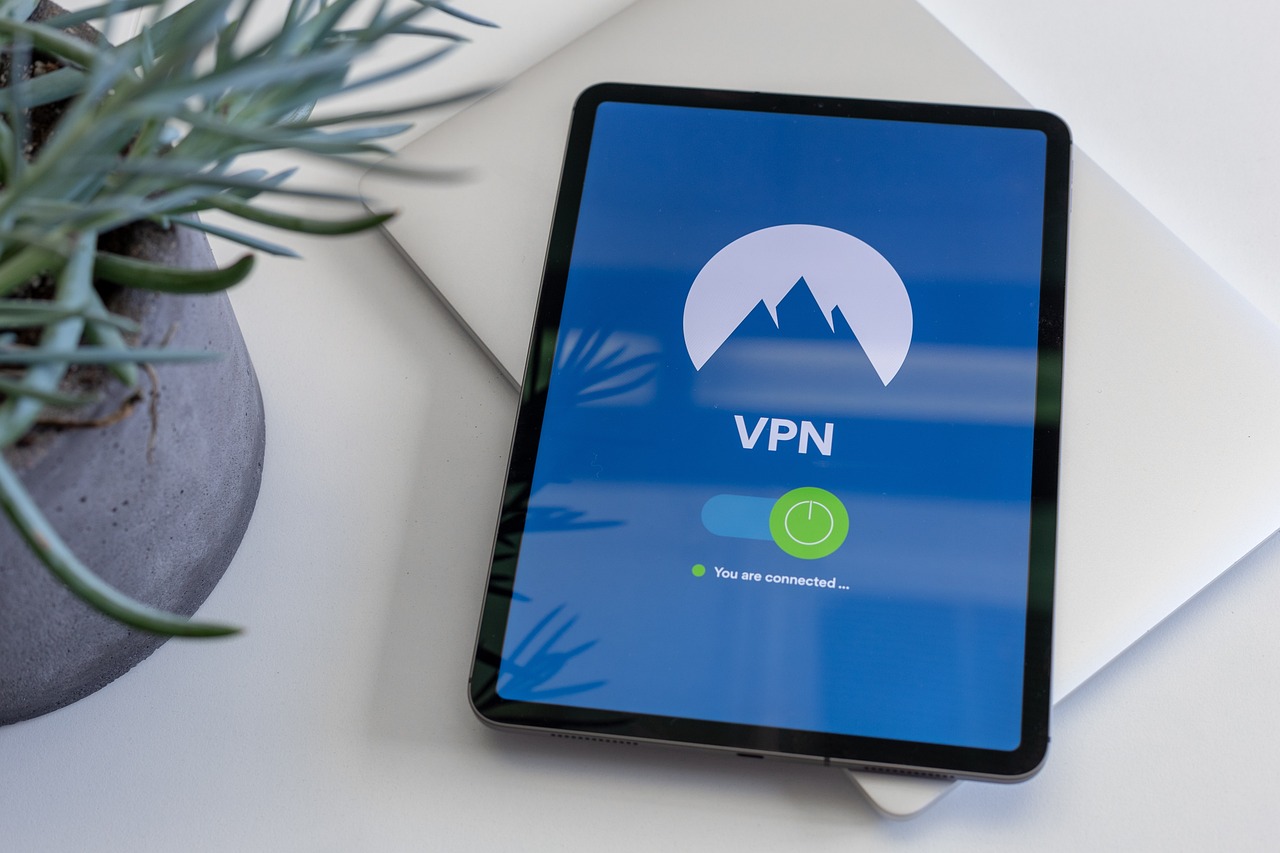
Types of Attacks
When it comes to securing your wallet, being aware of the various types of attacks is crucial. Each attack has its unique methods and targets, and understanding them can significantly enhance your wallet's security. Think of these attacks as different predators in the digital jungle, each with its own strategy for prey. By recognizing these threats, you can arm yourself with the knowledge necessary to defend your digital assets effectively.
One of the most prevalent forms of attack is phishing. Phishing attacks are designed to trick you into revealing sensitive information, such as your wallet credentials or private keys. These attacks often come in the form of deceptive emails or messages that mimic legitimate sources. Imagine receiving an email that looks like it’s from your wallet provider, urging you to click on a link to verify your account. If you fall for this trap, you might unwittingly hand over your information to cybercriminals. To protect yourself, always scrutinize URLs and be wary of unsolicited communications.
Next, we have malware risks. Malware is like a stealthy thief that infiltrates your devices without you even realizing it. Once installed, it can monitor your activities, capture keystrokes, and even access your wallet directly. This type of attack can occur through malicious downloads or compromised applications. To defend against malware, ensure that your antivirus software is up to date and avoid downloading applications from untrusted sources. Regular scans can help detect and eliminate potential threats before they escalate.
Another threat that cannot be overlooked is social engineering. This tactic involves manipulating individuals into divulging confidential information, often through psychological tricks. For instance, an attacker might pose as a tech support representative and convince you to share your wallet credentials. It’s essential to remember that legitimate companies will never ask for sensitive information in this manner. Always verify identities and be cautious about sharing personal information, even if the request seems legitimate.
In summary, the types of attacks targeting your wallet can be diverse and cunning. Here’s a quick recap of the main types:
- Phishing: Deceptive messages that trick you into revealing sensitive information.
- Malware: Malicious software that infiltrates your device to steal information.
- Social Engineering: Psychological manipulation to obtain confidential information.
By being aware of these attack types, you can take proactive measures to strengthen your wallet's security. Remember, knowledge is your best defense in this digital age!
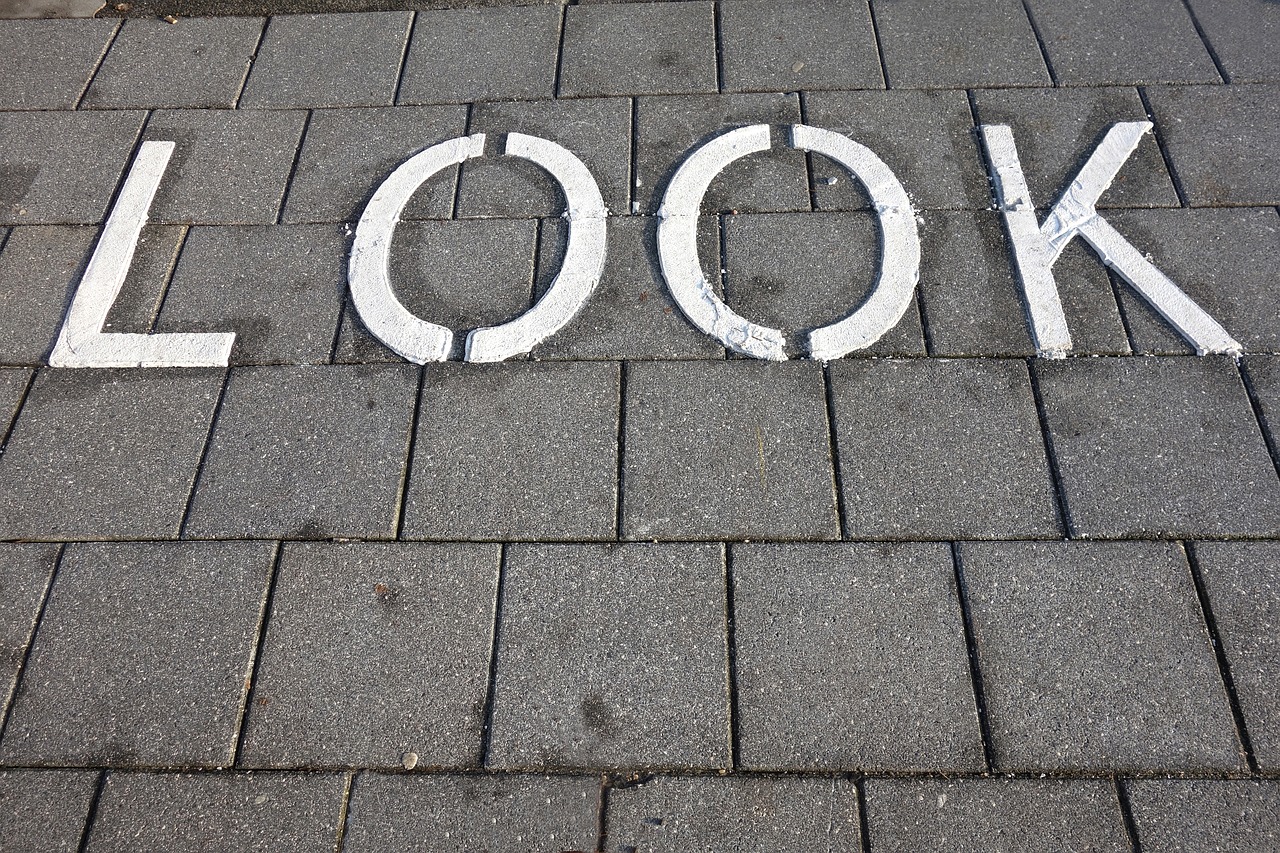
Phishing Attacks
Phishing attacks are like digital fishing expeditions, where cybercriminals bait their hooks with enticing emails or messages, hoping to reel in unsuspecting victims. These attacks aim to trick users into revealing sensitive information such as passwords, credit card numbers, or even access to their cryptocurrency wallets. Imagine receiving an email that looks like it’s from your bank, urging you to verify your account details. It’s alarming how easily someone can fall for such a trap!
To protect your wallet from phishing attacks, it’s essential to be vigilant and aware of the signs that indicate a potential scam. Here are some common tactics used by phishers:
- Urgency: Phishing messages often create a sense of urgency, claiming that immediate action is required to avoid account suspension or other penalties.
- Generic Greetings: Be wary of emails that address you with a generic salutation like "Dear Customer" instead of your name.
- Suspicious Links: Always hover over links before clicking to see the actual URL. Phishing links may look legitimate but lead to malicious sites.
Recognizing these red flags is the first line of defense against phishing attacks. However, awareness alone isn't enough; you must also implement precautionary measures. Here are some effective strategies:
- Two-Factor Authentication (2FA): Enable 2FA on your wallet and associated accounts. This adds an extra layer of security, making it harder for attackers to gain access.
- Verify Sender Information: Always check the sender's email address and verify it through official channels if you receive unexpected communications.
- Educate Yourself: Stay informed about the latest phishing techniques and tactics used by cybercriminals. Knowledge is power!
In conclusion, phishing attacks are a prevalent threat that can have devastating consequences for your wallet's security. By staying alert and adopting robust security practices, you can significantly reduce the risk of falling victim to these cunning schemes. Remember, it’s always better to be safe than sorry when it comes to protecting your digital assets!
1. What should I do if I suspect a phishing attack?
If you suspect a phishing attack, do not click on any links or provide any personal information. Report the email or message to your email provider and your wallet service provider.
2. Can phishing attacks be conducted through social media?
Yes, phishing attacks can occur on social media platforms. Be cautious of unsolicited messages and always verify the identity of the sender before engaging.
3. How can I educate myself about phishing techniques?
You can educate yourself by following cybersecurity blogs, participating in online courses, and keeping up with news about the latest phishing scams.
4. Is it safe to use public Wi-Fi for accessing my wallet?
Using public Wi-Fi can be risky. If you must use it, ensure you have a VPN enabled to encrypt your connection and protect your data.

Malware Risks
When it comes to securing your wallet, are a significant concern that cannot be overlooked. Malware, short for malicious software, can infiltrate your devices and wreak havoc on your digital assets. Imagine your wallet as a treasure chest; if a thief finds a way to pick the lock, they can steal everything inside in a matter of moments. That's exactly what malware does—it sneaks into your system, often without you even realizing it, and can compromise your wallet's security.
Malware can take many forms, including viruses, trojans, ransomware, and spyware, each with its own method of attack. For instance, a trojan might disguise itself as a legitimate application, tricking you into downloading it. Once installed, it can capture your keystrokes or access sensitive information, such as your wallet's private keys. This is why it's crucial to be vigilant about the software you install on your devices. Always download applications from reputable sources and keep an eye out for any suspicious behavior.
To help you better understand the different types of malware that could threaten your wallet, here’s a quick overview:
| Type of Malware | Description | Potential Impact on Wallet |
|---|---|---|
| Virus | A program that replicates itself and spreads to other files. | Can corrupt wallet files or steal sensitive data. |
| Trojan | A malicious program disguised as legitimate software. | Can create backdoors for hackers to access your wallet. |
| Ransomware | Locks your files and demands payment for access. | Can prevent you from accessing your wallet entirely. |
| Spyware | Secretly monitors your activities and collects information. | Can capture sensitive wallet information without your knowledge. |
Recognizing the signs of a potential malware infection is vital. If your device starts running slower than usual, crashes frequently, or you notice unexpected pop-ups, these could be indicators of malware at work. To protect your wallet, consider implementing the following protective measures:
- Use Antivirus Software: Invest in reputable antivirus software that can detect and remove malware before it can do any damage.
- Keep Software Updated: Regularly update your operating system and applications to patch any vulnerabilities that malware might exploit.
- Be Cautious with Downloads: Only download software from trusted sources, and always read reviews before installing new applications.
- Enable Firewall Protection: A firewall can help block unauthorized access to your device, providing an additional layer of security.
In conclusion, being aware of is essential for anyone who values their digital assets. By taking proactive steps to secure your devices, you can significantly reduce the chances of falling victim to malware attacks. Remember, just like you wouldn’t leave your front door wide open, don’t leave your wallet vulnerable to malicious software.
Q: What should I do if I suspect my wallet has been compromised by malware?
A: If you suspect malware has compromised your wallet, immediately disconnect your device from the internet, run a full antivirus scan, and change your wallet passwords from a secure device.
Q: Can malware affect hardware wallets?
A: While hardware wallets are generally more secure, they can still be affected if the computer they are connected to is infected with malware. Always ensure your computer is secure before connecting your hardware wallet.
Q: How often should I update my antivirus software?
A: You should update your antivirus software regularly, ideally set it to update automatically, to ensure you have the latest protection against new malware threats.

Social Engineering
Social engineering is a cunning tactic that exploits human psychology rather than technical vulnerabilities. Imagine a thief who doesn’t need to pick a lock but instead charms their way into your home by pretending to be a friend. This is essentially what social engineering does in the digital realm; it manipulates individuals into revealing confidential information that can jeopardize their wallet security. The art of deception can come in various forms, and being aware of these tactics is the first step in safeguarding your digital assets.
One of the most common methods of social engineering is through pretexting. In this scenario, an attacker creates a fabricated story or scenario to obtain personal information. For instance, they might impersonate a bank employee and request your account details under the guise of a security check. To combat this, always verify the identity of anyone requesting sensitive information. A simple phone call to the institution can save you from falling victim to such scams.
Phishing is another prevalent social engineering tactic, where attackers send fraudulent emails or messages that appear to be from legitimate sources. These messages often contain links that direct you to fake websites designed to steal your login credentials. To protect yourself, always check the URL of the website you’re visiting and be wary of any unsolicited communications. If you receive an email asking for sensitive information, don’t click any links; instead, navigate to the official website directly.
Moreover, baiting is a tactic where attackers leave infected devices, like USB drives, in public places, hoping a curious individual will plug it into their computer. This can lead to malware installation, potentially compromising your wallet security. Always be cautious of unknown devices and avoid connecting them to your personal systems.
Lastly, tailgating involves an attacker gaining physical access to a secure area by following someone authorized. This can happen in workplaces where security is lax. To counter this, always be vigilant about who is behind you when entering secure locations, and never hold the door open for strangers.
In summary, social engineering preys on human trust and curiosity. By being aware of these tactics and implementing protective measures, you can significantly reduce the risk of falling victim to such schemes. Remember, your wallet's security is not just about technology; it's also about being smart and cautious in your interactions.
- What is social engineering? Social engineering is a technique used by attackers to manipulate individuals into divulging confidential information by exploiting human psychology.
- How can I protect myself from social engineering attacks? Always verify the identity of anyone requesting sensitive information, be cautious of unsolicited communications, and stay aware of your surroundings.
- What should I do if I think I've been targeted by social engineering? If you suspect an attack, change your passwords immediately, report the incident to the relevant authorities, and monitor your accounts for unusual activity.
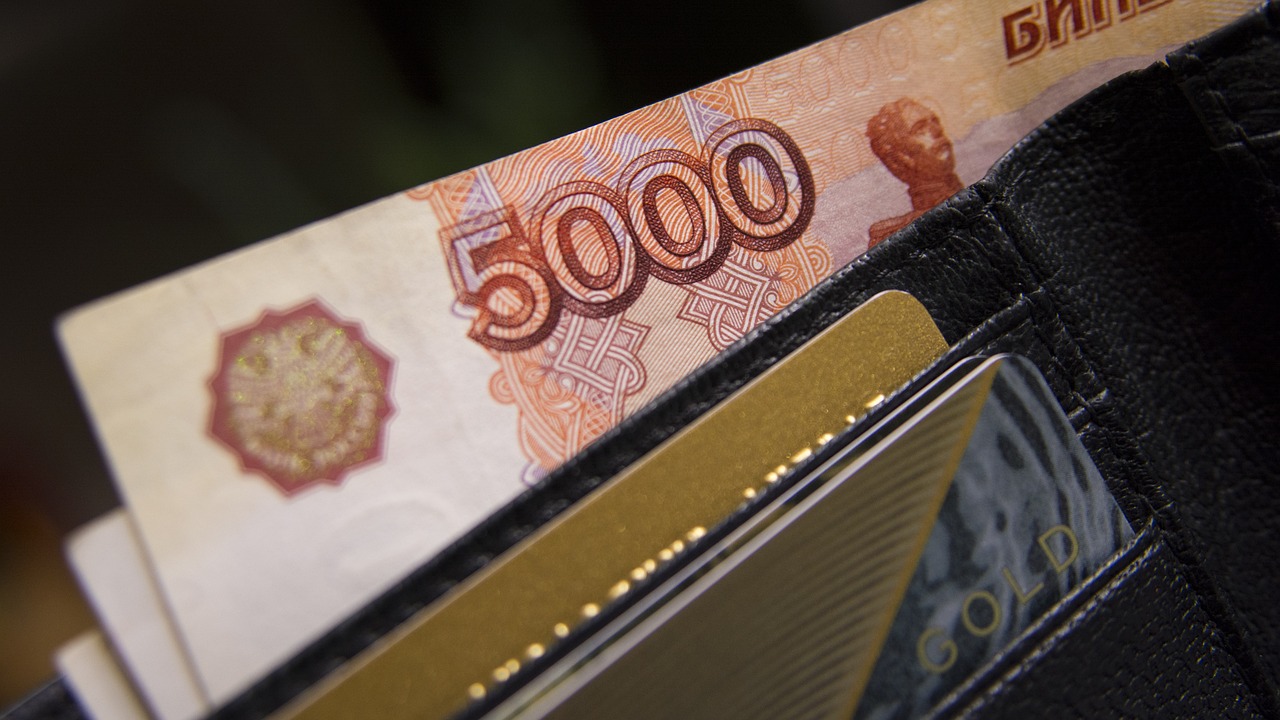
Conducting the Audit
Conducting a security audit on your wallet is akin to giving your digital assets a thorough health checkup. Just like you wouldn't skip a regular checkup at the doctor, you shouldn't overlook the importance of auditing your wallet's security. This process involves a systematic review of all security measures in place, ensuring that you can identify and rectify any vulnerabilities before they become a problem. So, let’s dive into the essential steps you need to take to effectively assess the security posture of your wallet.
First and foremost, you need to review your wallet's security settings. This is where you can control various aspects of your wallet's functionality, from two-factor authentication (2FA) to transaction limits. Regularly checking these settings can help you stay ahead of potential threats. For instance, enabling 2FA can significantly enhance your wallet's security by requiring an additional verification step when logging in or making transactions. Be sure to check:
- Is two-factor authentication enabled?
- Are your recovery phrases stored securely?
- Have you set up any transaction limits to prevent unauthorized access?
Next, it’s vital to test for vulnerabilities. This step is crucial as it allows you to pinpoint weaknesses that could be exploited by malicious actors. There are various tools available that can help you simulate attacks on your wallet, revealing potential entry points for hackers. For example, penetration testing tools can analyze your wallet's security framework and provide a report on any vulnerabilities found. Once you have identified these weaknesses, it’s essential to act promptly to address them, whether that means updating your software, changing passwords, or even switching wallets if necessary.
Moreover, keep in mind that a security audit isn’t a one-time event. Just as you wouldn’t ignore your health after a single checkup, your wallet needs regular audits to adapt to the ever-evolving threat landscape. Make it a habit to conduct these audits periodically, perhaps every few months, or whenever you notice any suspicious activity. By staying proactive, you can ensure that your wallet remains a fortress against potential threats.
In summary, conducting a security audit on your wallet is an indispensable practice for anyone serious about protecting their digital assets. By reviewing security settings and testing for vulnerabilities, you can significantly bolster your wallet's defenses. Remember, the goal is to create a secure environment where you can manage your assets with confidence, knowing that you've taken the necessary steps to safeguard them.
- How often should I conduct a security audit on my wallet?
It’s recommended to conduct a security audit every few months or whenever you notice unusual activity. - What tools can I use for vulnerability testing?
There are several tools available, such as penetration testing software, that can help identify weaknesses in your wallet's security. - Is two-factor authentication really necessary?
Yes, enabling two-factor authentication adds an extra layer of security and is highly recommended for protecting your wallet.
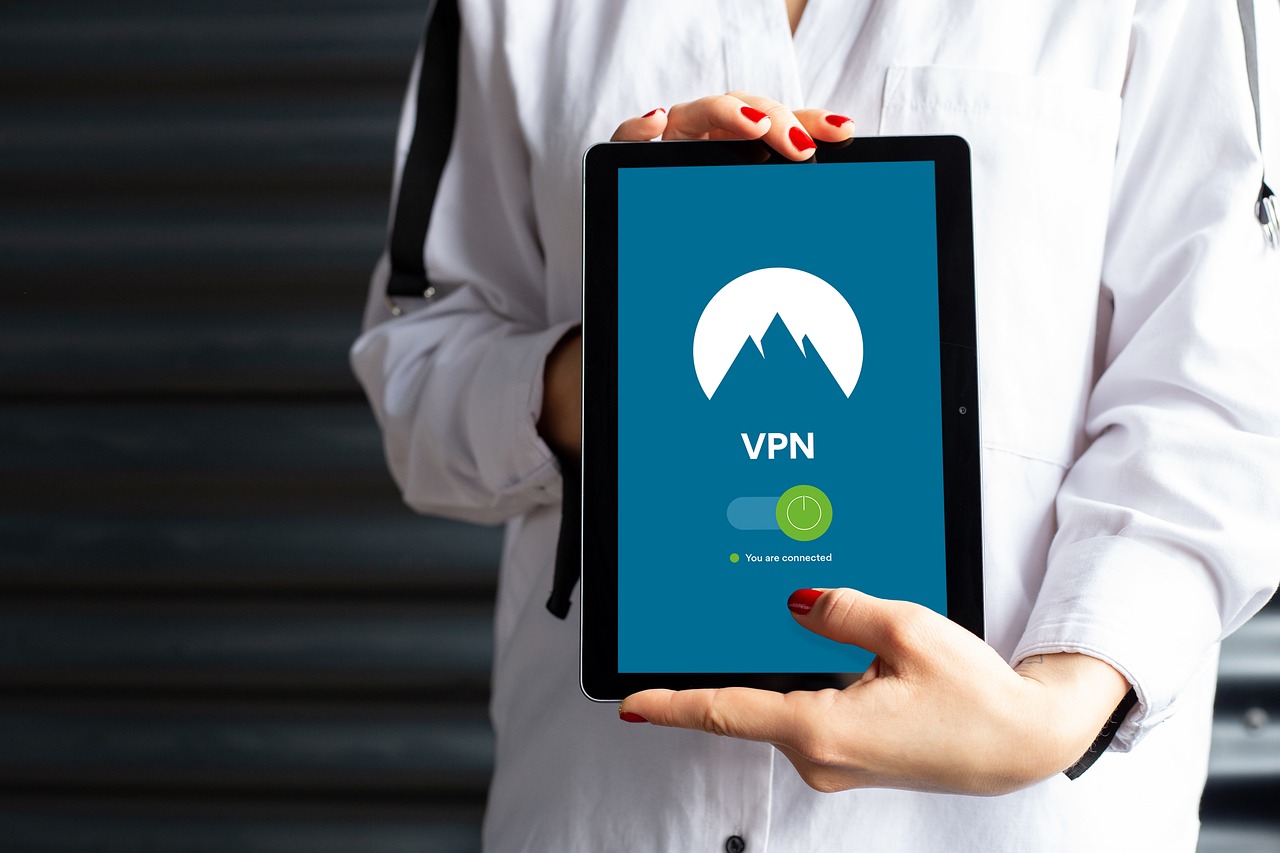
Reviewing Security Settings
When it comes to securing your digital assets, reviewing your wallet's security settings is not just a good idea; it's a necessity. Think of your wallet as a vault: if the door is unlocked or the code is easy to guess, then what's the point of having a vault at all? The first step in this review process is to access your wallet's security settings and familiarize yourself with the options available. Depending on the wallet you are using, you may find a variety of settings that can enhance your security.
Start by checking the authentication methods in place. Many wallets offer two-factor authentication (2FA), which adds an extra layer of security. This means that even if someone manages to get your password, they still need a second form of identification to access your wallet. If you haven’t enabled 2FA yet, now's the time to do so! It’s like having a guard at the door of your vault.
Next, assess the encryption settings. Encryption is vital for protecting your wallet data from unauthorized access. Ensure that your wallet uses strong encryption protocols. If you’re unsure, look for wallets that are well-reviewed and recommended by the community. You wouldn’t want to store your valuables in a vault that’s easy to break into!
Another important aspect to review is the backup options. Regularly backing up your wallet can save you from losing your assets in case of hardware failure or theft. Check if your wallet allows you to create encrypted backups and how often you should perform them. It’s like having a duplicate key to your vault, just in case you misplace the original.
Additionally, take a moment to review the transaction settings. Some wallets let you set limits on transactions or require additional confirmations for large transfers. This can protect you from unauthorized spending and give you peace of mind. It’s akin to having a security alarm that goes off when someone tries to take more than they should.
Lastly, don’t forget to explore the wallet's security logs. Many wallets provide logs that show recent activities, logins, and transactions. Regularly checking these logs can help you spot any suspicious activity early on. If you notice anything unusual, it’s crucial to act immediately—think of it as checking the security footage of your vault.
In summary, regularly reviewing your wallet's security settings is an essential step in protecting your digital assets. By ensuring that you have enabled two-factor authentication, strong encryption, regular backups, transaction limits, and monitoring security logs, you can significantly enhance your wallet's defenses against potential threats. Remember, a well-secured wallet is your best ally in the digital asset world.
1. What is two-factor authentication (2FA)?
Two-factor authentication (2FA) is a security process that requires two different forms of identification before granting access to your wallet. This typically involves something you know (your password) and something you have (a mobile device for a verification code).
2. How often should I review my wallet's security settings?
It’s a good practice to review your wallet's security settings at least once every few months or whenever there are updates to the wallet software. Keeping up with security trends is also advisable.
3. What should I do if I suspect unauthorized access to my wallet?
If you suspect unauthorized access, immediately change your password, enable two-factor authentication, and check your transaction logs for any suspicious activity. If necessary, contact your wallet provider for further assistance.
4. Are there wallets that are inherently more secure than others?
Yes, some wallets are designed with advanced security features, such as hardware wallets, which store your assets offline. Always research and choose wallets that are well-reviewed and have a good reputation in the community.

Testing for Vulnerabilities
When it comes to ensuring the security of your digital wallet, is a crucial step that cannot be overlooked. Think of it as a routine health check-up for your wallet; just like you wouldn’t ignore your health, you shouldn’t ignore potential security flaws. Vulnerability testing helps identify weaknesses before they can be exploited by malicious actors. So, how do you go about this essential process?
First off, you want to utilize various tools designed specifically for vulnerability assessment. These tools can scan your wallet and the associated infrastructure for known vulnerabilities. Some popular tools include:
- Burp Suite: A powerful tool for web application security testing.
- OWASP ZAP: An open-source tool that helps find security vulnerabilities in web applications.
- Nessus: A comprehensive vulnerability scanner that covers a wide range of potential issues.
Once you have selected your tools, the next step is to perform a comprehensive vulnerability assessment. This involves analyzing various aspects of your wallet's security, including:
- Authentication mechanisms: Are your login credentials strong enough? Consider multi-factor authentication.
- Data encryption: Is your wallet data encrypted both in transit and at rest?
- Access controls: Who has access to your wallet and how is that access managed?
After identifying potential vulnerabilities, it’s essential to address them promptly. Prioritize the vulnerabilities based on their severity and the potential impact they could have on your wallet’s security. For instance, a vulnerability that allows unauthorized access to your wallet should take precedence over a minor issue that doesn't affect functionality.
Additionally, consider conducting penetration testing, which simulates an attack on your wallet to see how well it holds up against real-world threats. This proactive approach can uncover vulnerabilities that automated tools might miss. Engaging a professional security team for this can be beneficial, as they possess the expertise to conduct thorough assessments and provide actionable insights.
Lastly, don’t forget to document your findings and the steps taken to mitigate any vulnerabilities. This documentation is not just for compliance; it can serve as a valuable resource for future audits and help you track improvements over time. By regularly testing for vulnerabilities and addressing them, you’re not just protecting your wallet; you’re also safeguarding your peace of mind.
Q: How often should I test my wallet for vulnerabilities?
A: It's advisable to conduct vulnerability tests at least once every few months, or whenever you make significant changes to your wallet or its security settings.
Q: Can I perform vulnerability testing on my own?
A: Yes, there are many tools available that allow you to perform vulnerability assessments on your own. However, for more comprehensive testing, consider hiring a professional.
Q: What should I do if I find a vulnerability?
A: Prioritize the vulnerability based on its severity, then take immediate action to mitigate it. This could involve applying patches, changing settings, or enhancing security measures.
Q: Is penetration testing necessary?
A: While not mandatory, penetration testing is highly recommended as it provides a deeper insight into your wallet's security posture and can reveal vulnerabilities that automated tools might miss.
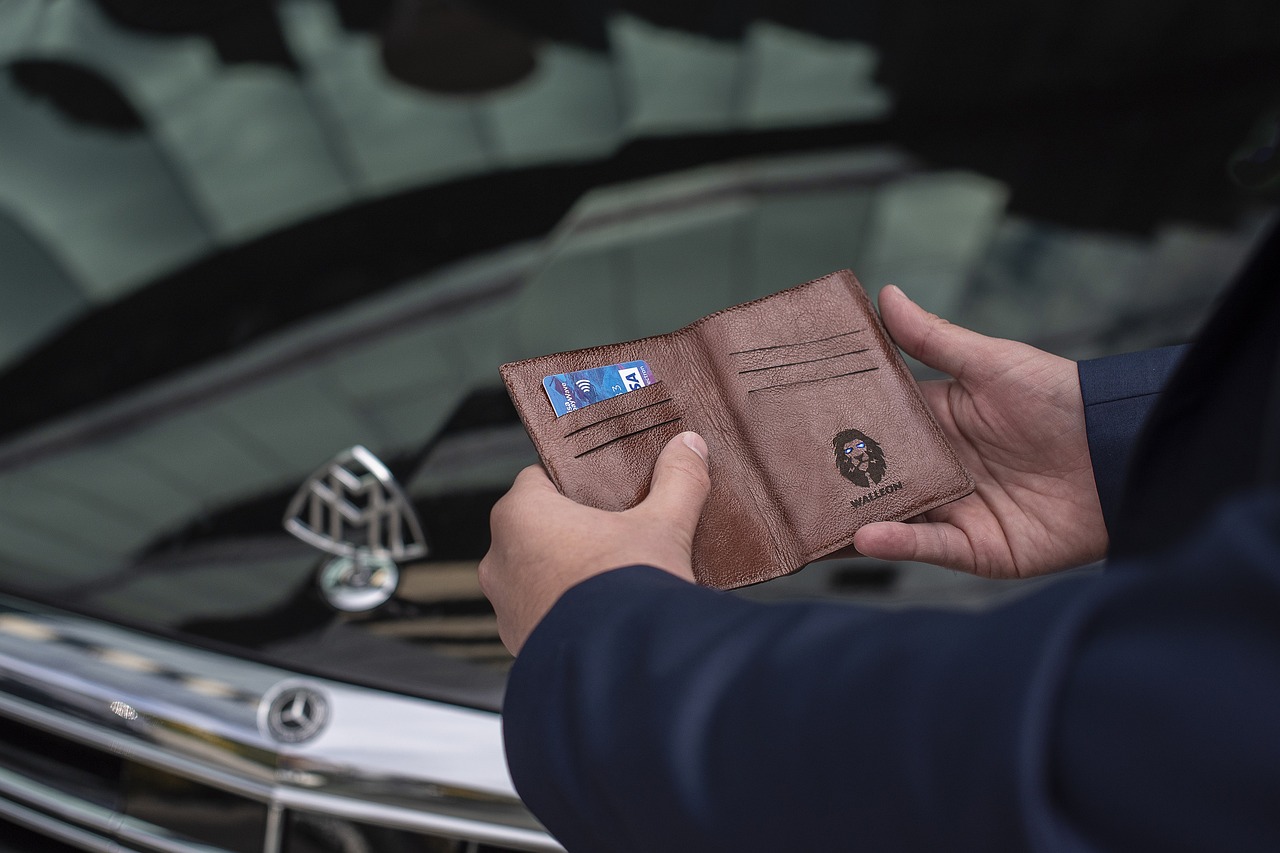
Implementing Best Practices
When it comes to securing your digital assets, is not just a recommendation—it's a necessity. Think of your wallet as a treasure chest; if you want to keep your treasures safe, you need to take every precaution available. This section will explore key strategies that can significantly enhance your wallet's defenses against potential threats, ensuring that your digital valuables remain secure.
One of the most critical practices is to ensure that your wallet software is always up-to-date. Just like how you wouldn’t leave your front door unlocked, you shouldn’t leave your wallet vulnerable to newly discovered threats. Software updates often include patches for security vulnerabilities that hackers exploit. By regularly checking for updates and installing them promptly, you’re essentially reinforcing the locks on your treasure chest.
Another essential practice is to implement robust backup strategies. Imagine losing your wallet and all its contents in a blink of an eye. That’s a nightmare scenario for anyone! To avoid such a fate, it's crucial to back up your wallet data securely. Here are a few strategies to consider:
- Use Multiple Backup Locations: Store copies of your wallet backup in various secure locations, such as an external hard drive, cloud storage, or even a secure physical location.
- Encrypt Your Backups: Just as you wouldn’t want someone to easily access your treasure map, encrypting your backups ensures that they remain confidential and protected from unauthorized access.
- Regularly Test Your Backups: Periodically check to ensure your backups are functional and accessible. This step is often overlooked but is vital for peace of mind.
Additionally, consider utilizing multi-factor authentication (MFA). This extra layer of security is akin to having a two-key system for your treasure chest—one key is your password, and the other could be a temporary code sent to your phone. Even if someone manages to steal your password, they would still need that second form of verification to access your wallet.
Finally, always be vigilant about your online behavior. The internet can be a wild west of scams and phishing attempts, so staying informed is crucial. Regularly educate yourself about the latest security threats and how to recognize them. It’s like being a knight in shining armor for your digital assets—always ready to defend your treasures against any lurking dangers.
Q: How often should I update my wallet software?
A: You should check for updates regularly, ideally once a week, to ensure you have the latest security patches.
Q: What should I do if I suspect my wallet has been compromised?
A: Immediately change your passwords, enable multi-factor authentication, and consider moving your assets to a new wallet.
Q: Is it safe to use cloud storage for wallet backups?
A: While cloud storage can be convenient, ensure that your backups are encrypted and consider using a reputable provider with strong security measures.

Regular Updates
Keeping your wallet software updated is not just a good practice; it’s a critical line of defense against potential threats. Imagine your wallet as a fortress. Over time, cracks and vulnerabilities can develop, much like a castle that needs regular maintenance to withstand sieges. By ensuring that your wallet is always running the latest version, you’re essentially reinforcing those walls and adding new layers of protection against the ever-evolving landscape of cyber threats.
Updates often come with security patches that address known vulnerabilities. These patches are like the knights of your digital realm, ready to fend off attackers who might exploit weaknesses in older versions of software. If you neglect these updates, you’re leaving your wallet exposed, akin to leaving the gates of your fortress wide open. Regularly checking for updates is a simple yet effective way to bolster your wallet's security.
Moreover, updates can introduce new features that enhance usability and security. For example, a recent update might include two-factor authentication (2FA) options or improved encryption methods, making it even harder for malicious actors to breach your defenses. By staying current, you not only protect your assets but also benefit from improved functionality that can make managing your digital currency easier and more efficient.
To make the most of your updates, consider setting your wallet software to automatically update whenever possible. This way, you won’t have to remember to check manually, and you’ll ensure that you’re always operating with the best protection available. However, if automatic updates aren’t an option, here are a few tips to keep your wallet secure:
- Check for updates at least once a month.
- Subscribe to the wallet provider’s newsletter for security alerts.
- Follow the wallet’s official social media channels for announcements about updates.
In conclusion, regular updates are a fundamental aspect of maintaining wallet security. By treating your wallet with the care it deserves and ensuring it remains up-to-date, you’re taking proactive steps to safeguard your digital assets from potential threats. Remember, in the world of cybersecurity, an ounce of prevention is worth a pound of cure!
Q: How often should I update my wallet software?
A: It’s recommended to check for updates at least once a month, or enable automatic updates if available.
Q: What happens if I don’t update my wallet?
A: Failing to update your wallet can leave it vulnerable to attacks, as older versions may have security flaws that have been patched in newer releases.
Q: Are updates safe to install?
A: Yes, updates from reputable wallet providers are generally safe and are designed to improve security and functionality.
Q: Can I still use my wallet if there’s an update available?
A: Yes, you can continue to use your wallet, but it’s advisable to install the update as soon as possible to ensure maximum security.

Backup Strategies
When it comes to securing your digital assets, having a solid backup strategy is like having a safety net beneath a tightrope walker. You never know when you might need it, but when the unexpected happens, you’ll be glad you prepared. A backup strategy ensures that you can recover your wallet in case of loss, theft, or even a technical failure. So, how do you create a backup plan that’s both effective and secure? Let’s dive into some essential practices.
First and foremost, you should consider the **types of backups** you want to implement. There are generally two main types: hot backups and cold backups. Hot backups are stored online and can be quickly accessed, while cold backups are stored offline, making them less susceptible to hacking. Here’s a quick comparison:
| Backup Type | Accessibility | Security Level |
|---|---|---|
| Hot Backup | Quick Access | Lower |
| Cold Backup | Slower Access | Higher |
Next, let’s talk about the actual process of backing up your wallet. It’s crucial to not only back up your wallet data but also to store it securely. Here are some steps to follow:
- Use Strong Encryption: When creating backups, ensure that your files are encrypted. This adds a layer of security, making it difficult for unauthorized users to access your information.
- Store in Multiple Locations: Don’t just rely on one backup. Store copies in different locations, such as an external hard drive, USB stick, or even a secure cloud service.
- Regularly Update Backups: Your wallet's data can change frequently, so it’s essential to update your backups regularly. Set a schedule to ensure you’re not left with outdated information.
Another critical aspect of backup strategies is the recovery process. You should be familiar with how to restore your wallet from a backup in case of an emergency. Create a step-by-step guide for yourself, detailing how to access your backups and restore your wallet. This guide can be a lifesaver when you’re in a panic and need to regain access to your assets quickly.
Finally, always remember to test your backups. It’s not enough to create a backup; you need to ensure that it works. Periodically try restoring your wallet from your backup to verify that everything functions as expected. This practice not only gives you peace of mind but also helps you identify any issues before they become critical.
In summary, a robust backup strategy is an essential part of your wallet's security. By understanding the types of backups, implementing a thorough backup process, and regularly testing your backups, you can protect your digital assets against unforeseen circumstances. After all, in the world of digital finance, it’s better to be safe than sorry!
1. How often should I back up my wallet?
It’s advisable to back up your wallet whenever you make significant changes, such as adding new assets or after a software update. A good rule of thumb is to set a schedule, like weekly or monthly, to ensure your backup is current.
2. What should I do if I lose my backup?
If you lose your backup, it’s crucial to have a recovery plan in place. If you have a cold backup stored securely in another location, you can use that. If not, you may risk losing access to your assets permanently.
3. Is it safe to store backups in the cloud?
While cloud storage offers convenience, it can also be vulnerable to hacking. If you choose to use cloud services, ensure that your files are encrypted, and use strong, unique passwords for your accounts.
4. Can I have too many backups?
While having multiple backups can be beneficial, it’s essential to manage them effectively. Too many backups can lead to confusion and make it difficult to know which one is the most current. Keep your backup strategy organized and streamlined.
Frequently Asked Questions
- What is a security audit for a wallet?
A security audit for a wallet is a systematic evaluation of your wallet's security measures to identify vulnerabilities and potential threats. It involves reviewing security settings, testing for weaknesses, and implementing best practices to safeguard your digital assets.
- Why is understanding wallet security important?
Understanding wallet security is crucial because it helps you protect your digital assets from various threats. Different types of wallets have different security features, and knowing how they work allows you to choose the best option for your needs and enhance your protection against potential attacks.
- What are common threats to wallet security?
Common threats to wallet security include phishing attacks, malware, and social engineering. These tactics can trick users into revealing sensitive information or compromise their devices, leading to unauthorized access to wallets and the loss of digital assets.
- How can I identify phishing attempts?
You can identify phishing attempts by looking for suspicious emails or messages that ask for sensitive information, contain misspellings, or direct you to unofficial websites. Always verify the source before clicking on links or providing any personal information.
- What should I do if I suspect malware on my device?
If you suspect malware on your device, immediately run a full antivirus scan, disconnect from the internet, and avoid entering any sensitive information. Consider using malware removal tools and, if necessary, seek professional help to ensure your device is clean.
- What are some best practices for wallet security?
Some best practices for wallet security include regularly updating wallet software, using strong passwords, enabling two-factor authentication, and securely backing up your wallet data. These steps help protect against newly discovered vulnerabilities and ensure you can recover your wallet if needed.
- How often should I conduct a security audit on my wallet?
It's a good idea to conduct a security audit on your wallet at least once every few months or whenever you notice unusual activity. Regular audits help you stay ahead of potential threats and ensure your security measures are up to date.
- What tools can I use to test for vulnerabilities in my wallet?
There are various tools available for testing wallet vulnerabilities, including penetration testing software and security scanners. Some popular options include OWASP ZAP, Burp Suite, and various wallet-specific security tools that can help identify weaknesses.
- How can I securely back up my wallet data?
To securely back up your wallet data, use encrypted storage options such as external hard drives or cloud services with strong encryption. Always create multiple copies and store them in different locations to ensure you can recover your wallet in case of loss or theft.

